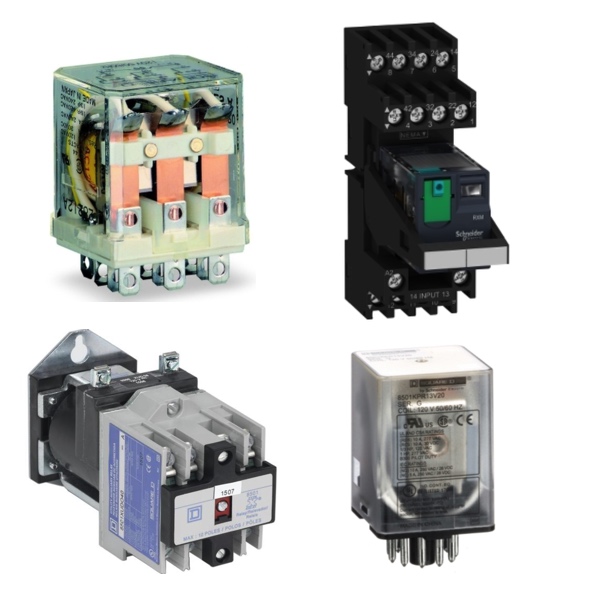Square D Electromechanical Relays

Square D power relays, manufactured by Schneider Electric, are designed for dependable control, logic, and power switching in industrial and commercial electrical systems. RSP Supply carries a wide selection of single-phase Square D power relays ranging from 1 to 12 poles, with multiple relay components available to support a broad range of control applications. These relays are commonly used in control panels, automation systems, and machinery where reliable switching performance is essential.
Schneider Electric Harmony electromechanical relays include universal, miniature, interface, and power relay designs with contact configurations from 1 CO to 4 CO and current ratings up to 30 amps. Available in a variety of coil voltages and contact arrangements, Harmony relays help reduce enclosure size while improving system reliability. Pre-assembled relay solutions that include sockets and accessories simplify installation, while push-in sockets and bus jumpers reduce wiring time and ease maintenance when multiple relays are installed.
Square D 8501 Type K, Type R, and Type X relays provide versatile options for general-purpose and heavy-duty applications. Type K relays are suited for multi-pole switching at 240 volts or lower and feature industry-standard pin configurations for easy replacement. Type R relays offer long mechanical life and fast operation for high-speed control systems, while Type X relays are modular, heavy-duty relays designed for applications requiring durability, reliability, and ease of maintenance.
FAQs
Q: What are Square D power relays used for?
Square D power relays are used for control logic, signal switching, and power switching in industrial and commercial electrical systems.
Q: What pole configurations are available?
Square D power relays are available in single-phase configurations ranging from 1 to 12 poles to meet a wide range of control requirements.
Q: What is the difference between Square D 8501 Type K, R, and X relays?
Type K relays are general-purpose relays with standard pin configurations for easy replacement. Type R relays offer short armature stroke and long mechanical life for high-speed control. Type X relays are heavy-duty, modular relays designed for demanding control applications.
Q: What are the benefits of Schneider Electric Harmony relays?
Harmony relays offer compact designs, multiple contact and coil voltage options, pre-assembled solutions, and wiring accessories that reduce installation time and simplify maintenance.
Q: What is the difference between electromechanical and solid-state relays?
Electromechanical relays use physical moving contacts and provide audible switching feedback, while solid-state relays use semiconductor technology with no moving parts for silent operation and high switching speed.
Why Buy Square D Power Relays from RSP Supply
RSP Supply offers a comprehensive selection of Square D power relays to support industrial control and automation applications. Our inventory includes Harmony electromechanical relays and 8501 Type K, R, and X relays in multiple pole configurations and ratings. Customers rely on RSP Supply for knowledgeable technical support, dependable sourcing, and industrial-grade relay solutions designed for long-term reliability.

